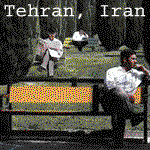US Subprime Mortgage Crisis Affects Kingdom
 by Khalil Hanware
by Khalil Hanware JEDDAH, 6 September 2007 — The recent volatility in global financial markets due to problems in the US subprime mortgage market have taken their toll on banks throughout the world including Saudi Arabia. While Saudi banks will be able to comfortably absorb only minimal exposure to distressed loans, corporations such as Saudi Basic Industries Corp. (SABIC) have already faced some constraints.
According to Riyadh-based Jadwa Investment’s September Monthly Bulletin released yesterday, at first glance Saudi Arabia appears little affected by the gyrations of global markets. Since the US stock market peaked on July 19, the Tadawul All-Share Index has climbed by 6.9 percent, maintaining the upward trend it began at the start of the month. Strong demand meant that investors accepted a lower yield than previously indicated for a $1.5 billion SABIC bond issued on Aug. 21.
“We do not believe that any Saudi banks have significant direct or indirect exposure to the US subprime market. However, a closer look reveals that Saudi Arabia is not isolated from what is happening on global markets. In the case of the SABIC bond, the bulk of the demand came from the Middle East and principally Saudi investors, so its repricing was not reflective of global credit conditions,” Brad Bourland, chief economist and head of research at Jadwa Investment, said.
SABIC had originally planned to raise $2.7 billion from the issue rather than the $1.5 billion it raised. Other bond issues from the Gulf Cooperation Council have suffered (Dana Gas of the UAE postponed a $1 billion sukuk) and greater caution is likely to have had an impact on investor perceptions of Saudi Arabian risk.
The report said higher credit spreads would increase the cost of borrowing, even after taking into consideration any reduction in the Fed funds rate. Although borrowing costs are not prohibitive, prospects for debt issuance have deteriorated and companies looking to borrow in order to finance foreign acquisitions are revising their plans.
This presents an opportunity for large Saudi investors who are not reliant on new or foreign borrowing and therefore better positioned to acquire foreign assets, generally at cheaper prices than prior to the recent market moves.
Bourland told Arab News, “Another possible winner from the turmoil in global markets is the Saudi stock market. There is speculation in the market that Saudi investors have repatriated funds owing to concerns about further falls in international markets, although data to confirm this are not yet available.
“Most leading developed and emerging equity markets have fallen since the turmoil began, including those elsewhere in the region, as foreign investors have withdrawn funds. Dubai is down 1.4 percent, Abu Dhabi down 3.2 percent and Egypt down 4.6 percent.”
With the Saudi market not open widely to foreign investors, it can be considered something of a safe haven during times of global financial market uncertainty.”
An expected cut in the US Fed funds rate may also impact on Saudi Arabia. Bourland commented: “The riyal’s peg to the US dollar means that Saudi interest rates have to track broadly those in the US. Should SAMA (Saudi Arabian Monetary Agency) let local interest rates diverge too greatly from those in the US, money market investors will quickly take advantage of the arbitrage opportunity that is created. With inflation rising, lower interest rates appear out of line with what the economy needs. We do not believe that any local institution has significant exposure to US subprime mortgage loans. Foreign assets of Saudi commercial banks totaled $41 billion at the end of July, but these tend to be invested relatively cautiously in low-risk instruments such as US Treasury bonds, and give no cause for concern about the health of the banking sector. The situation is likely to be similar for SAMA, which manages the government’s foreign assets,” Bourland said, adding, “SAMA’s stock of foreign assets is huge ($255 billion at the end of July) and increased by an average of $4.3 billion per month over the first seven months of this year. It is well positioned to comfortably absorb any hit caused by subprime exposure.”
Saudi Arabia is now developing its own mortgage market. While the mortgage law is still to be approved, the housing finance industry is beginning to take off and there are pools of loans that appear ripe for securitization. However, the legal and regulatory infrastructure for securitization is not yet in place and the ongoing troubles in the US may slow its development.
The bulletin said that over the longer term, the risk is that troubles in the US financial sector spread into the rest of the economy and push the US into recession. As it is the world’s biggest consumer, a recession in the US would hurt economic performance throughout the world. The most direct impact of a US recession on Saudi Arabia would be through lower oil prices.
A slowdown in the US would also hit demand and therefore prices for other goods produced by Saudi Arabia such as petrochemicals and plastics. Finally, owing to the exchange rate peg, there would likely be additional interest rate cuts and a possible further weakening of the riyal, along with the dollar.
Labels: Saudi Arabia, United States














0 Comments:
Post a Comment
<< Home